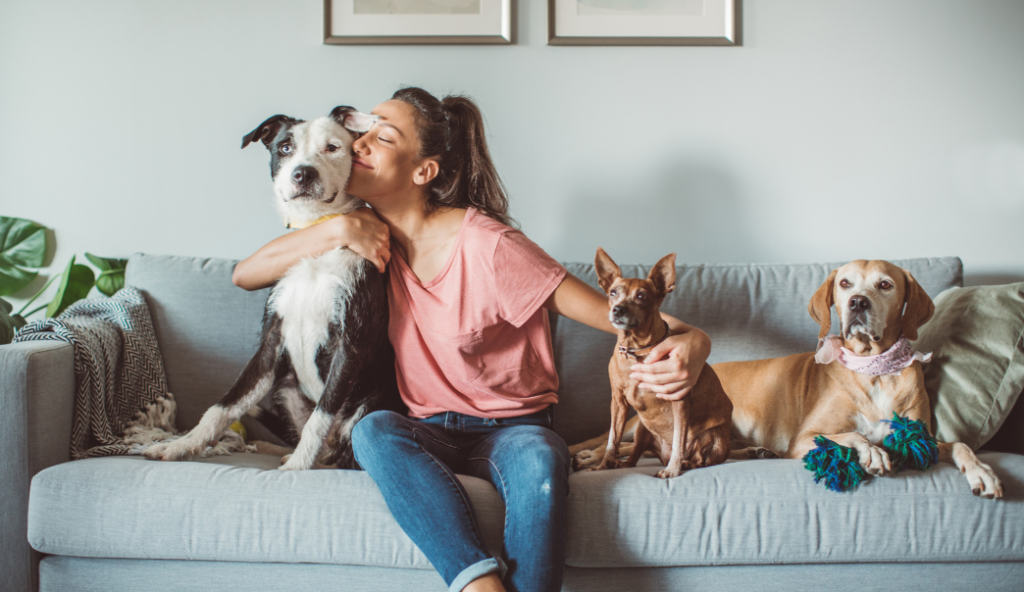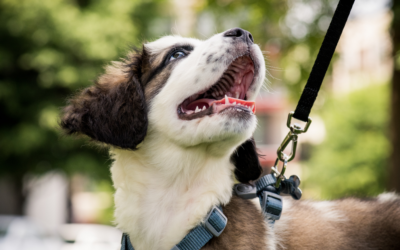Welcoming a new furry friend into your home can be a delightful experience for everyone involved. However, introducing a new pet into a household with existing pets or children requires careful planning and preparation. Understanding the challenges that may arise and taking proactive steps to ensure a smooth transition is crucial.
This article will provide practical advice on integrating a new pet into your home so the whole family can quickly embrace this exciting new addition.
Understanding the Challenges of Integrating a New Pet
When bringing a new pet into your home, it's crucial to consider the dynamics of your existing pets. Each animal has its personality and preferences, and introducing a new member can disrupt the established hierarchy.
For example, if you have a dog used to being the center of attention, they may have more trouble adjusting to a new animal in the home getting attention as well.
One way to ease the transition is by gradually introducing the new pet to your existing pets. You could start by allowing them to sniff each other's scents through a closed door. This helps familiarize them with each other's presence without direct contact. You can also swap bedding or toys between the pets to promote familiarity and acceptance.
Similarly, adjusting to a new family member can be an exciting yet challenging time for your children (if there are any in the household). Help them understand and interact safely with the new pet by teaching them the importance of gentle handling and respecting boundaries. With the proper guidance, your children and pets can develop a lasting bond that brings joy to all.
Encourage your children to participate in the care and training of the new pet. This helps them develop a sense of responsibility and strengthens the bond between the child and the animal. Assign age-appropriate tasks such as feeding, grooming, or teaching simple commands. This involvement helps the pet feel more comfortable in their new environment and fosters a sense of teamwork and empathy in your children.
It's important to note that the adjustment period for pets and children can vary. Some may adapt quickly, while others may require more time and patience. Be prepared for setbacks and challenges, and remember to celebrate small victories. By providing a loving and supportive environment, you can help your pets and children navigate the challenges of welcoming a new family member.
Preparing Your Home for a New Pet
Bringing a new pet into your home is an exciting and joyful experience. Whether you're adopting a furry friend or welcoming a scaly companion, it's essential to create a safe and comfortable environment for them to thrive in. You can ensure your new pet feels right at home when they enter the door by taking a few extra steps to prepare your home.
One of the first things you'll want to do is set up a cozy spot for your new pet. This designated area will serve as their little sanctuary, providing them with security and comfort. Consider placing a soft and comfortable bed and a few toys to keep them entertained in this space. Don't forget to include water and food bowls, and for cats have kitty litter accessible, so they can easily access things they may need. Ensure that they are not bothered in this area initially, either by other pets in the household or too many people.
Creating a safe space for your new pet goes beyond just providing them with a cozy spot. Pet-proofing your home is essential to ensure their safety and prevent accidents or mishaps. Take the time to inspect your living space and identify any potential hazards carefully.
Remove toxic plants that could be harmful if ingested, and secure electrical cords to prevent your pet from chewing on them. Keeping small objects out of reach is also good, as they could pose a choking hazard.
Furthermore, consider blocking off certain areas of your house that may not be pet-friendly. In that case, keeping your new pet away from that area might be best until they fully acclimate to their new surroundings. You can use baby gates or other barriers to restrict access to these spaces, allowing your pet to explore and roam freely in the areas that are safe for them.
Another important aspect of preparing your home for a new pet is ensuring you have all the necessary supplies. Stock up on essentials such as food, treats, and grooming supplies. Depending on the type of pet you're bringing home, you may also need a litter box, a scratching post, a cage, or others. Having these items ready and easily accessible will make the transition smoother for you and your new pet.
Lastly, don't forget to consider your home's temperature and overall climate. Some pets are more sensitive to extreme temperatures than others. Make sure you have a plan to keep your pet comfortable during hot summer or chilly winter days. This could involve providing them with a cozy blanket, adjusting the thermostat, or even using a fan or heater to regulate the temperature in their designated area.
Preparing your home for a new pet is important in ensuring their well-being and happiness. Creating a safe space, pet-proofing your home, and having all the necessary supplies ready will set the stage for a smooth and enjoyable transition.
Patience and love are key during this process, as your new pet may need time to adjust to their new surroundings. With a little effort and preparation, you'll be well on your way to creating a loving and welcoming home for your new furry or scaly family member.

The Introduction Process: Step-by-Step Guide
The introduction process plays a vital role in ensuring a successful integration of your new pet into your household. The initial meeting between your pets should be carefully orchestrated to help set the stage for positive interactions.
Creating a calm and controlled environment is vital when introducing your new pet to your existing pets. Ideally, it's best to find a neutral territory, such as a quiet room or a neutral outdoor space. With dogs, meeting outside on leash and spending some time walking parallel but with space between them can be ideal. With cats, introducing them outside of any rooms where you current cat may spend a majority of their time can be best.
Before the actual introduction, some people feel that exchanging scents between the pets can be helpful. Rub a cloth or towel on each pet and then swap them, allowing each pet to sniff and become familiar with the other's scent. However, with some animals this can increase anxiety.
When it's time for the first face-to-face meeting, make sure that you have two people available to handle each of the pets for safety. You can allow them to sniff each other from a safe distance. Observe their body language closely. If either pet shows signs of aggression or fear, such as growling, hissing, or raised fur, it's important to redirect their attention and separate them if necessary.
If either is showing signs of fear, such as crouching, backing away, or others, then make sure you take it especially slow. Your pets do not need to meet face-to-face immediately.
One effective way to redirect their attention is by using treats or toys. Have plenty of treats and reward both pets for calm and relaxed behavior. This positive reinforcement will help them associate each other's presence with positive experiences.
Remember, patience is crucial during this process. It may take time for your pets to become comfortable with each other. Gradually increase the duration of their interactions, constantly monitoring their behavior closely. If any signs of aggression or tension arise, take a step back and give them more time to adjust.
Building a bond between your new and existing pets is gradual. Encourage positive interactions such as supervised play sessions, where both pets can engage in activities together. Reward them with praise and treats for demonstrating good behavior, such as playing nicely or sharing toys.
In addition to supervised play sessions, it's important to provide each pet with individual attention and quality time.
By fostering a harmonious environment and following these step-by-step guidelines, your pets will gradually develop trust and form a strong bond. Every pet is unique, and the introduction process may vary depending on their personalities. Stay patient and consistent, and always prioritize the well-being and safety of your pets.
Navigating Potential Problems when integrating a new pet
Problems may still arise during integration, even with the best preparation. Dealing with aggression or fear is essential to maintain a safe household. Seek guidance from a professional trainer or behaviorist who works with pets. They can provide valuable insights and develop a customized training plan to address any issues that may arise.
When integrating pets into a new environment, it is important to consider each animal's unique personalities and backgrounds. Some pets may have had negative experiences, leading to fear or aggression. By understanding their needs and triggers, you can create a safe and comfortable space for them to adjust.
Addressing behavioral issues promptly is crucial to prevent them from escalating. Monitor your pets' behavior closely and consult help if you notice any signs of distress, anxiety, or aggression. They can help identify the underlying causes and recommend resolving these challenges.
In some cases, pets may exhibit anxiety or stress during the integration process. This can manifest in excessive barking, meowing, pacing, hiding, or destructive chewing. To help alleviate their anxiety, create a calm and predictable routine for your pets. This can include regular exercise, mental stimulation, and designated quiet spaces for them to retreat to.
Additionally, consider using positive reinforcement techniques to encourage good behavior and build trust between pets. Rewarding them with treats, praise, or playtime when they display appropriate behavior can help reinforce positive associations and reduce adverse reactions.
Remember, patience is key when integrating pets into a new household. It may take time for them to adjust and form bonds with each other. By providing a structured and supportive environment, you can help facilitate a smooth integration process and create a harmonious home for all your pets.

Maintaining a Harmonious Household
Establishing routines and boundaries for your pets is key to maintaining harmony within your household. This includes consistent feeding schedules, designated playtimes, and regular exercise. The predictability and structure will make your pets feel secure, reducing their stress levels and promoting positive behavior.
It's also important to ensure that each pet feels valued and loved. Spend quality one-on-one time with your pets, engaging in activities they enjoy.
Integrating a new pet into your home can be a rewarding experience for everyone involved. By understanding the challenges, taking appropriate steps to prepare your home, and following a step-by-step introduction process, you can ensure a smooth transition for your new and existing pets or children.
Remember, patience and love are key throughout integrating a new pet into your home. Before you know it, your home will be filled with endless joy and cherished memories with your furry family.



